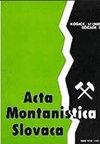摩洛哥Gharb平原典型农业地下水中的杀虫剂:空间分布和健康风险
IF 1.4
4区 地球科学
Q2 GEOSCIENCES, MULTIDISCIPLINARY
引用次数: 0
摘要
农业集约化依赖于大量植物检疫产品的应用,这些产品污染了空气、土壤和水,并危及人类生命。这项研究是在摩洛哥西北部属于Sebou流域的Gharb平原进行的。本研究采用液相色谱-串联质谱(LC-MS/MS)和气相色谱-串联质谱(GC-MS/MS)分析方法评价地下水被杀虫剂污染的情况。这篇研究论文涵盖了对20个不同水井的20个样本的分析,这些水井的灌溉周长为250,000公顷的地表。此外,分析表明存在由杀虫剂引起的严重污染,这些污染集中在研究区域的南部,污染水平为水样的50%。这超过了世界卫生组织(WHO)的标准,即0.5微克/升。此外,分析还发现了22种杀虫剂的有效成分,如马拉硫磷、灭多威乙醛、狄氏剂和倍硫磷。我们研究中的风险评估使我们确定了五种杀虫剂(马拉硫磷;Mythomil;chloropyrifos-ethyl;地下水中二嗪农(Diazinon)含量高达1,说明该地区杀虫剂使用强度大,污染风险高。本文章由计算机程序翻译,如有差异,请以英文原文为准。
Insecticides in the typical agricultural groundwater in the Gharb plain (Morocco): spatial distribution and health risks
The intensification of agriculture relies on the application of large quantities of phytosanitary products, which contaminate the air, soil, water, and risk human life. This study was carried out in the Gharb plain, which belongs to the Sebou watershed in the North-West of Morocco. The goal of this study is to evaluate the contamination of the groundwater by insecticides using liquid chromatography-tandem mass spectrometry (LC-MS/MS) and Gas Chromatography-Tandem Mass Spectrometry (GC-MS/MS) analyses. This research paper covers the analysis of 20 samples of 20 different wells for an irrigated perimeter of 250,000 ha of the surface. Further, the analyses show the presence of intense contamination caused by insecticides, which are concentrated in the southern part of the study area, where the contamination level is 50% of the water samples. This exceeds the norm of the World Health Organization (WHO) standard, which is represented in 0.5 µg/l. Furthermore, the analyses also detect the presence of 22 active ingredients of insecticides, such as malathion, methomyl alderine, dieldrin, and fenthion. Risk assessment in our studies allowed us to determine that the different RQ calculated for five insecticides (Malathion; Mythomil; chloropyrifos-ethyl; Diazinon) recorded in underground water were up to 1, which proves the intensive use of insecticide in this region and the high risk of contamination.
求助全文
通过发布文献求助,成功后即可免费获取论文全文。
去求助
来源期刊

Acta Montanistica Slovaca
地学-地球科学综合
CiteScore
3.60
自引率
12.50%
发文量
60
审稿时长
30 weeks
期刊介绍:
Acta Montanistica Slovaca publishes high quality articles on basic and applied research in the following fields:
geology and geological survey;
mining;
Earth resources;
underground engineering and geotechnics;
mining mechanization, mining transport, deep hole drilling;
ecotechnology and mineralurgy;
process control, automation and applied informatics in raw materials extraction, utilization and processing;
other similar fields.
Acta Montanistica Slovaca is the only scientific journal of this kind in Central, Eastern and South Eastern Europe.
The submitted manuscripts should contribute significantly to the international literature, even if the focus can be regional. Manuscripts should cite the extant and relevant international literature, should clearly state what the wider contribution is (e.g. a novel discovery, application of a new technique or methodology, application of an existing methodology to a new problem), and should discuss the importance of the work in the international context.
 求助内容:
求助内容: 应助结果提醒方式:
应助结果提醒方式:


